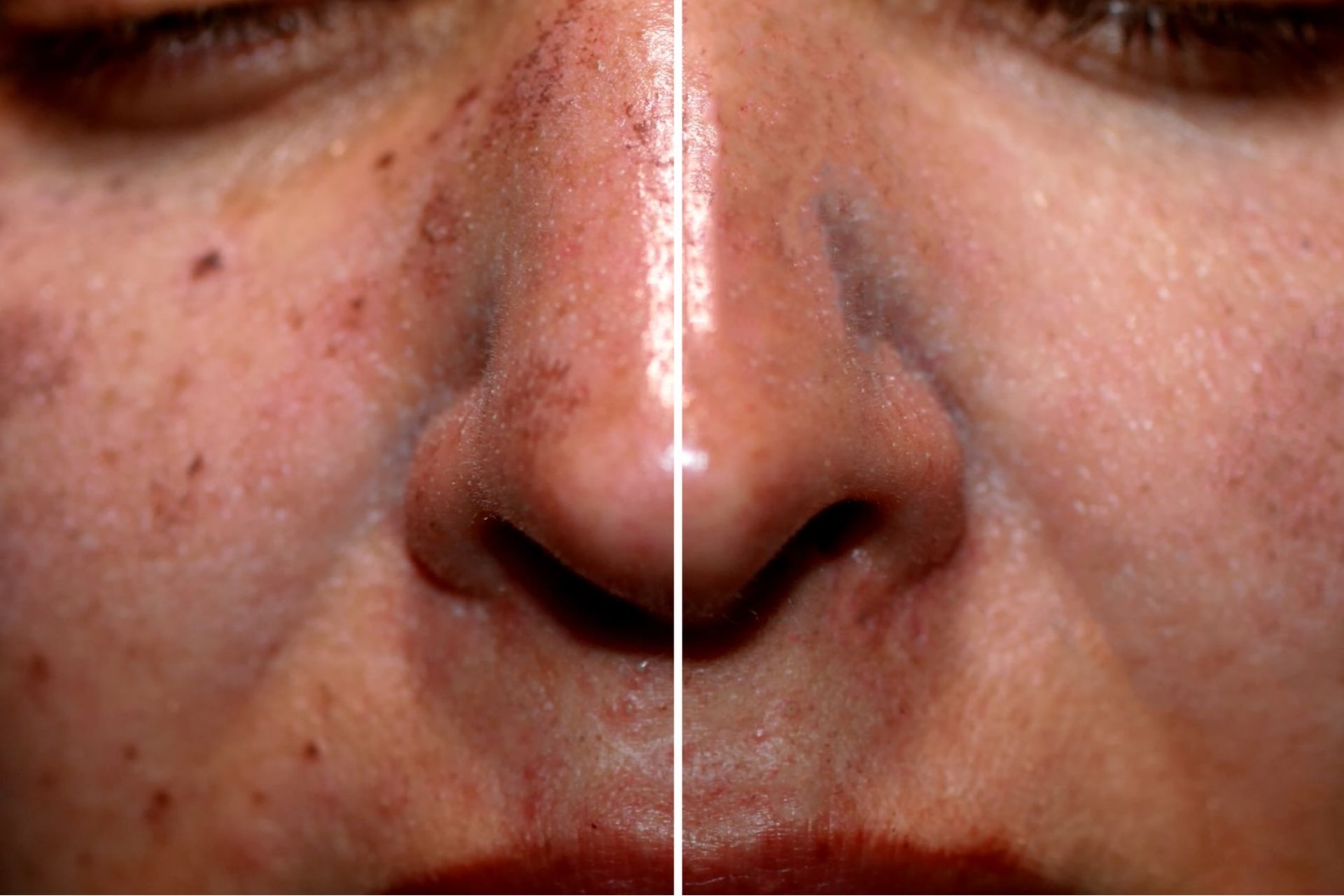By this time of year, at the end of the summer, your clientele is probably noticing some changes in their skin. Ongoing exposure to the sun is harmful and its damaging effects become especially apparent after the summer, when the UV radiation is strongest. There’s also plenty of evidence that UVA and UVB rays cause more than just surface-level discoloration, but also accelerate the aging process, contribute to wrinkles, and can lead to cancer.
Dermatologists have some great tools available to help their patients turn back the clock though. There are multiple types of laser treatment that can help eliminate visible signs of sun damage and restore a clearer, younger look to their skin.
Table of Contents
What Types of Sun Damage Can be Treated with Lasers?
Sun damaged skin can show up as:
- Hyperpigmentation and hypopigmentation (sunspots),
- Uneven skin tone,
- Rosacea,
- Melasma of irregular patches of darker skin,
- Freckles, and
- Wrinkles.
Advantages of Laser and Light Therapy for Sun Damaged Skin
Laser and light therapy are non-invasive methods for repair and regenerating the cells of sun-damaged skin. It improves the overall look and texture, helping to achieve a more even skin tone and smoother surface. Laser treatments are relatively pain-free and require little recovery time. Other benefits include reduced swelling and inflammation, as well as improved blood circulations in the tissues treated by lasering.
What to Tell Your Patients about Laser Therapy for Sun-Damaged Skin
It’s important to help your clients set realistic expectations before the procedure. They should know that significant improvement will be seen over time; it may not be noticeable for a few weeks following treatment. The surface of the skin may look pink and feel irritated for a day following the treatment procedure. They may also notice mild swelling for several days.
It’s recommended to use a hydrating moisturizer and avoid wearing makeup in the days following laser treatment. Patients need to take extra care to avoid UV exposure after lasering. They should avoid tanning, direct sunlight, and self-tanners, while using strong sunscreen daily.
Types of Laser Skin Treatment for Sun Damage
Pigment-Seeking Lasers
Q-switched equipment, like Picosecond lasers, and Nd:YAG lasers, are both effective for treating pigment irregularities. Q-switched lasers target light to medium sunspots and can sometimes eliminate them with a single session. Nd:YAG lasers work on all skin types, even darker complexions, concentrating heat waves to break up pigment particles. These same lasers are also effective for attacking the pigment of ink for tattoo removal.
During therapy, numbing cream and local anesthetics are advised to help manage pain. Following laser treatment, patients will notice that sunspots initially change color and scab over. After about one week, the scab will fall off revealing clearer skin.
Ablative Resurfacing Lasers
Laser technicians turn to ablative lasers to treat extensive sun damage, aging, and skin with deep wrinkles. Ablative lasers are more invasive, passing through the skin and remove some of the outer layers. Devices including CO2 lasers and Erbium YAG lasers are used to treat medium to severe sun damage and stimulate a greater amount of collagen. But this type of treatment requires a longer healing period. Patients should plan to spend two to three weeks caring for their skin and taking it easy.
Fractional ablative lasers provide safer and less invasive resurfacing procedures that can help reverse visible sun exposure damage. They effectively treat fine lines, wrinkles, hyperpigmentation, and sunspots. While this type of therapy requires less downtime than regular ablative resurfacing, multiple sessions may be necessary to get the best results.
“Today’s question is, ‘what is the difference in recovery time between an ablative and a non-ablative laser?’ An ablative laser, such as a CO2 or Erbium laser, can be up to seven to ten days, sometimes two weeks, to recover from, seeing as you were technically burning the skin. A non-ablative laser such as an IPL or hair removal usually is much fewer, only two to three days.”
– Christian, clinical technician at Laser Service Solutions
Non-Ablative Lasers
Sun-damaged skin can also be rejuvenated using non-ablative lasers, lights, and energy treatments. The goal is to use targeted microbeams to heat the epidermis and dermis and activate the body’s natural collagen production. This type of laser treatment doesn’t injure or remove the outermost layer of skin. The overall effect of this skin treatment seems to reverse sun damage with younger-looking skin and reduced appearance of brown spots. Patients appreciate the fact that procedures are quick, involve minimal discomfort, and require practically no recovery time.
IPL
Though it’s not technically a laser, Intense Pulsed Light is another device that dermatologists and technicians trust for skin resurfacing. Using intense light that targets melanin, IPL photofacials successfully reduce the appearance of hyperpigmentation, rosacea, and brown spots.
This type of procedure is quick (30-40 minutes), painless when a numbing cream is applied, and demands minimal downtime. IPL is gentle and works over the course of several treatments, gradually resulting in a clearer, smoother surface. Because it doesn’t damage the skin, it can also be used regularly as part of long-term skin care routine.
Thinking about adding cosmetic lasers to your practice? Consider Working with a Laser Company that Manufactures Its Own Parts.
Want Help Selecting Equipment for Your Dermatology Practice?
Contact Laser Service Solutions. We’ll help you find the best laser skin treatments for sun damage and other laser equipment options to fit your needs.
We understand that you want to give your patients the most effective care possible. By adding laser therapy to your offerings, you can provide your patients with highly effective treatment for sun damage and pigmentation issues. Call us today at (856) 853-7555 or use our online contact form to learn more.


